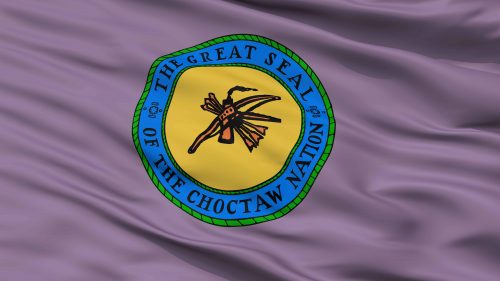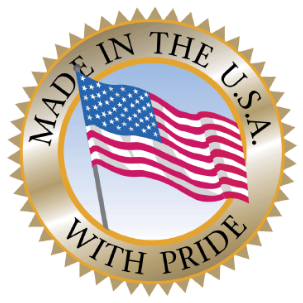Choctaw Nation Flag History

Steve Doorlag
If you live in Oklahoma, and even if you don’t, you may be familiar with the amazing Choctaw Nation flag.
The unstrung bow, three arrows, and smoking pipe-hatchet symbolize the history and culture of the Choctaw Nation.
But what do you know about Choctaw Nation flag history?
Let’s take a look at how the flag came to be and what it means.
The Choctaw Nation
The Choctaw Nation is an American Indian territory that resides in southeastern Oklahoma. They are the third-largest tribe in the US (federally recognized) and are the second-largest by area, second only to the Navajo.
The Choctaw Nation has over 220,000 enrolled members and they are larger than eight US states. The NAtion has been around in one form or another for hundreds of years, consolidating three separate Nations at one point, splitting into three districts soon after, before coming back together under one name: Choctaw Nation.
The Civil War
The American Civil War broke out in 1861, and most tribes forced into Indian Territory sided with the confederacy. That included the Choctaw Nation, and they became the first United States tribe to adopt a flag.
The original flag was said to be light blue with a red-edged circle that was white in the center. The circle contained a peace pipe, a bow, and three arrows representing the three subdivisions of the Choctaw Nation at the time. The Choctaw nation was made up of the Apuckshenubbe, Pushmataha, and Mosholatubbee Nations.
The exact colors of the flag from that era may be lost as colors fade over time and change to different shades. The original flag was only used from 1861-1864 and has continued to serve as an inspiration to all future Choctaw flags. A replica of the original flag stills hangs in the Oklahoma Historical Museum, and a variant exists in the Oklahoma Historical Society.
The Great Seal
At the center of the Choctaw flag is the great seal. The great seal was created in 1860 and contained the words, ‘THE GREAT SEAL OF THE CHOCTAW NATION’ around the edge. The great seal was never made and only designed due to the interruption of the civil war. While the seal was not made, it was used as the centerpiece of the Choctaw flag and endures today.
At the center of the seal, you will find an unstrung bow, three arrows, and a smoking pipe-hatchet. The three symbols together tell the history and tradition of the Choctaw Indians.
The Peace Pipe
At their core, many Indian Nations were peaceful, and the Choctaws were no different. The peace-pipe (or peace-hatchet) would be used as the Choctaws sat around the council fires and deliberation and discussed issues.
The Unstrung Bow
Though peace was always the first option, there had to be protection should the Nation come under attack. Unstrung bows signify that peace is the first option, but unstrung bows can be quickly strung should it come to that. They would defend themselves if provoked.
The Three Arrows
The three arrows signify the three distinct districts within the Choctaw Nation: Apuckshenubbe, Pushmataha, and Mosholatubbee.
Each district was named for a chief who signed the Treaty of Doak’s Stand in 1820, in which the US assigned land in Southern Oklahoma in exchange for land in Mississippi. It was in 1830 that the Choctaw Nation divided into three separate districts, with each one taking on the name of one of the three chiefs.
The three arrows can refer to the lands or the chiefs.
The Changing Colors
The original colors of the flag are not known with certainty, and the colors of the Choctaw flag have changed over time. These changing colors are an attempt to rectify mistaken perceptions of the flag, now that technology can more accurately depict the fading and changing of colors over time.
When scholars study the impact of light and time on fabric and color, they can better understand how dye changes. Blues often move from vibrant blue to maroon, and then into purple. Whites will yellow over time. And, reds will move to purple before becoming blue.
When the history of the flag is looked at, the changing colors need to be factored into the equation. It is possible that the colors depicted in pictures and other media are not the original colors.
The Current Flag
The current flag follows the same design that has always been seen but adds more detail and intricacy. The inner circle of the flag is yellow, the three items at the center of the seal remain the same, but are edged in black, the pipe has smoke coming from it, there are two light-green cords on either side of the blue ring, and the red field has been changed to purple.
Wrapping Up
The original colors may still be up for debate, but the beauty of the seal and flag is not. The flag showcases the history and culture of the Choctaw Nation, telling a story instead of only showing colors and patterns.
A beautiful flag that is steeped in history, the Choctaw flag is still flown today.



